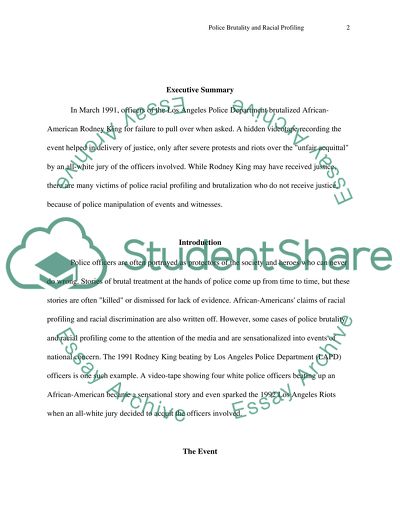Cite this document
(“Police Brutality and Racial Profiling: Looking Back At Rodney King Research Paper”, n.d.)
Police Brutality and Racial Profiling: Looking Back At Rodney King Research Paper. Retrieved from https://studentshare.org/law/1553563-rodney-king-beating
Police Brutality and Racial Profiling: Looking Back At Rodney King Research Paper. Retrieved from https://studentshare.org/law/1553563-rodney-king-beating
(Police Brutality and Racial Profiling: Looking Back At Rodney King Research Paper)
Police Brutality and Racial Profiling: Looking Back At Rodney King Research Paper. https://studentshare.org/law/1553563-rodney-king-beating.
Police Brutality and Racial Profiling: Looking Back At Rodney King Research Paper. https://studentshare.org/law/1553563-rodney-king-beating.
“Police Brutality and Racial Profiling: Looking Back At Rodney King Research Paper”, n.d. https://studentshare.org/law/1553563-rodney-king-beating.


